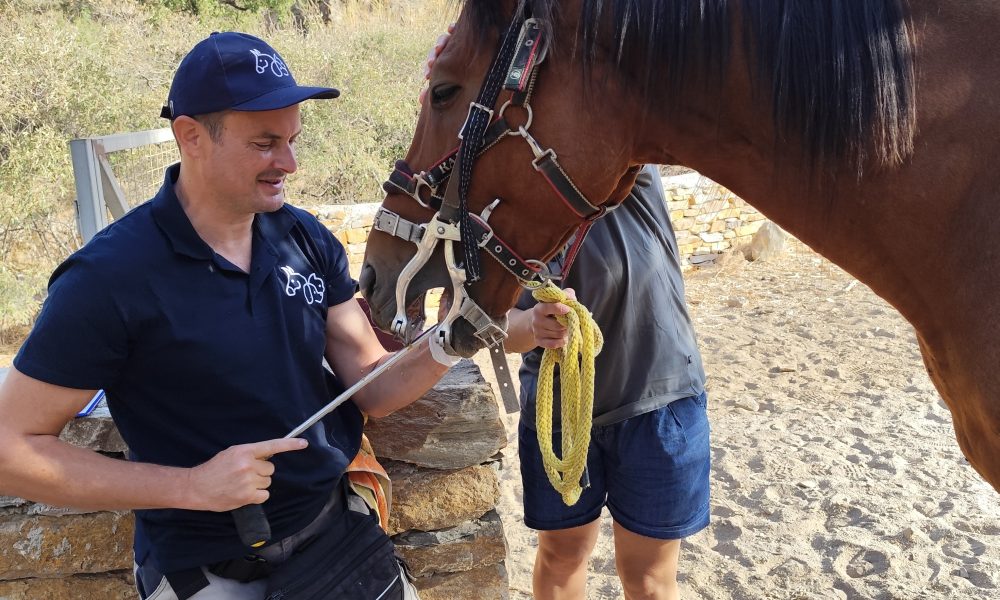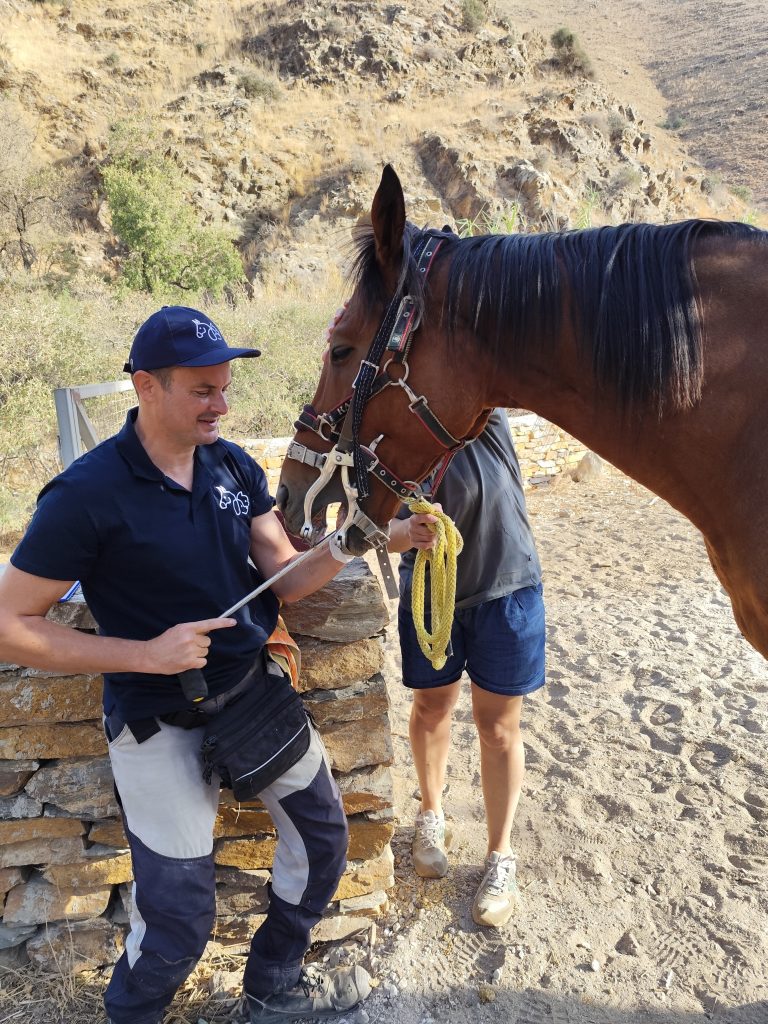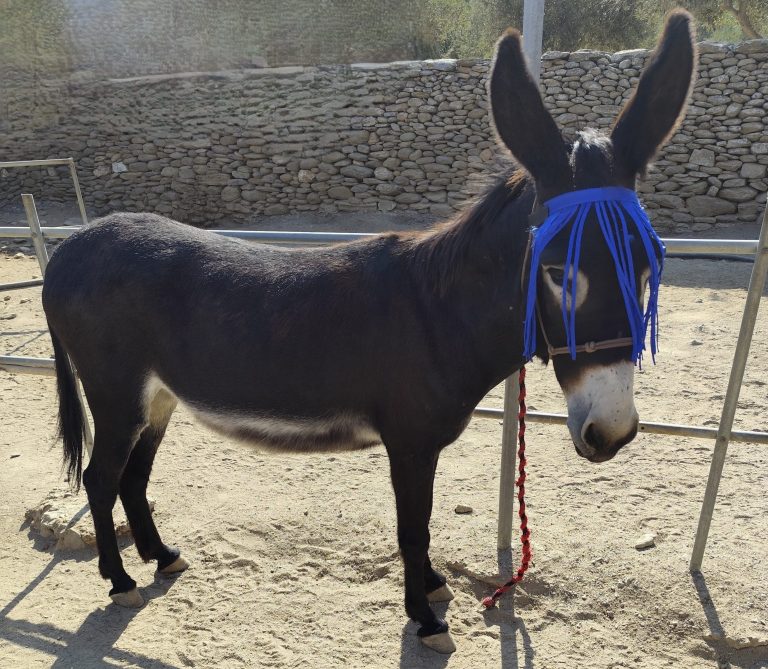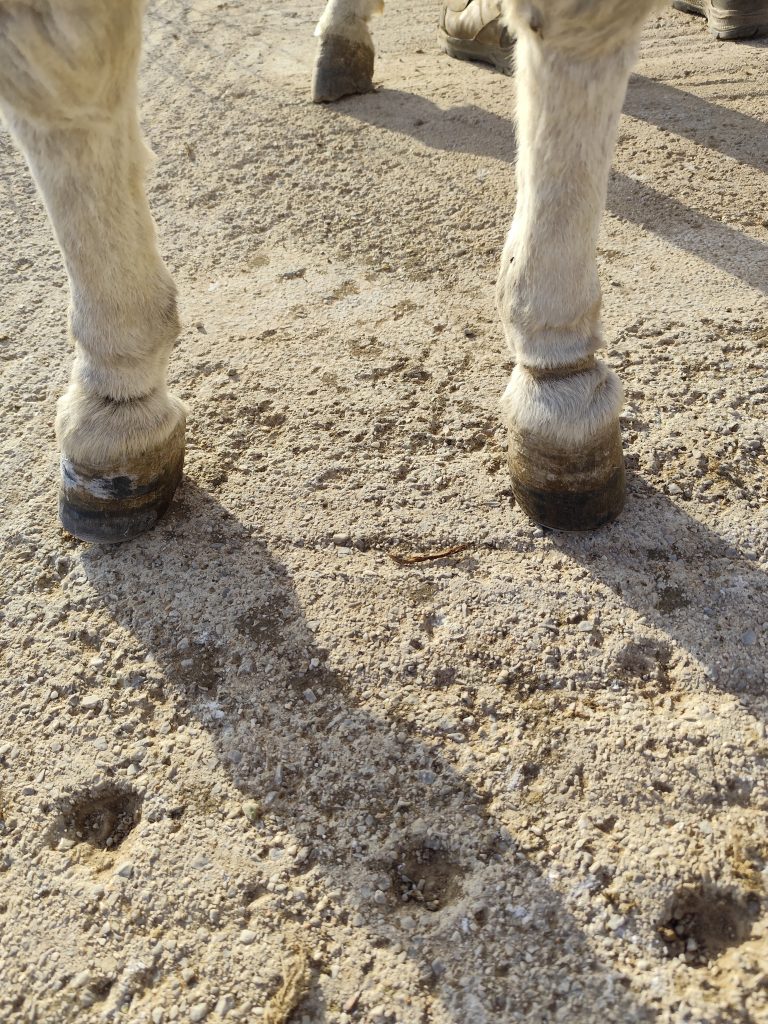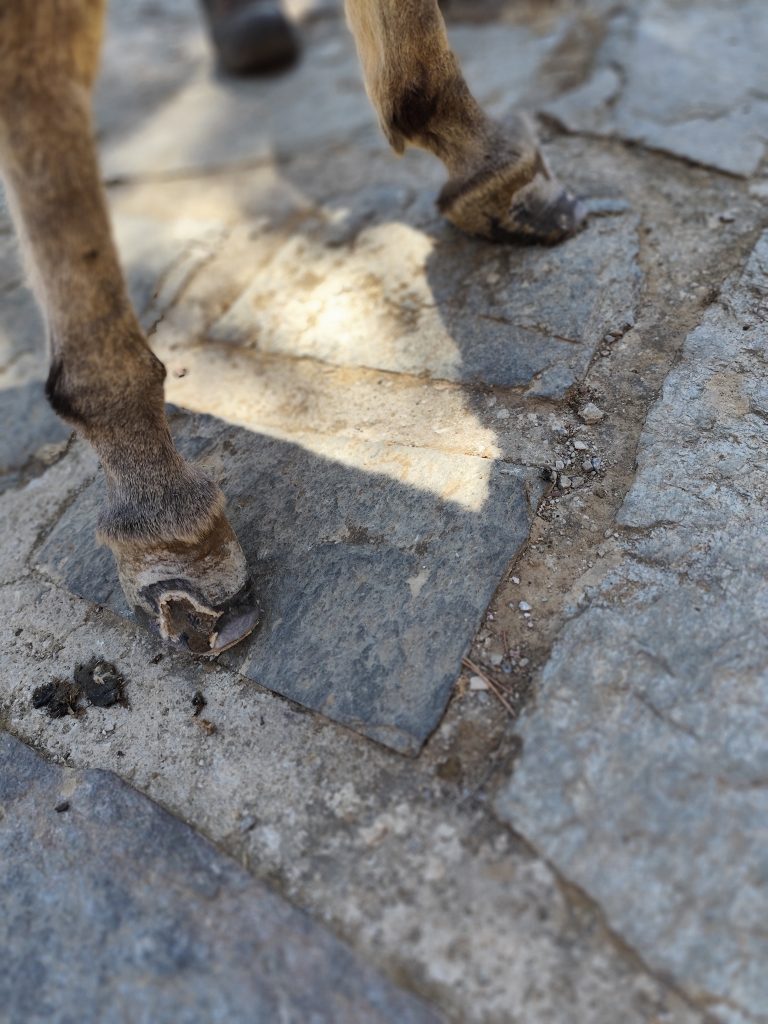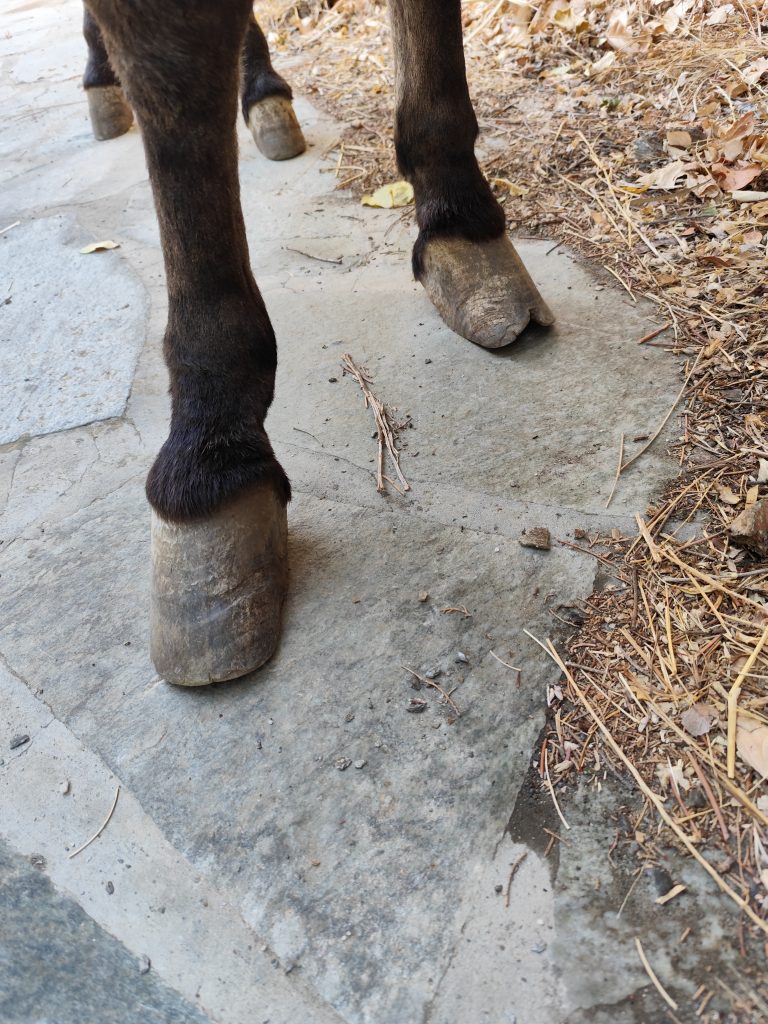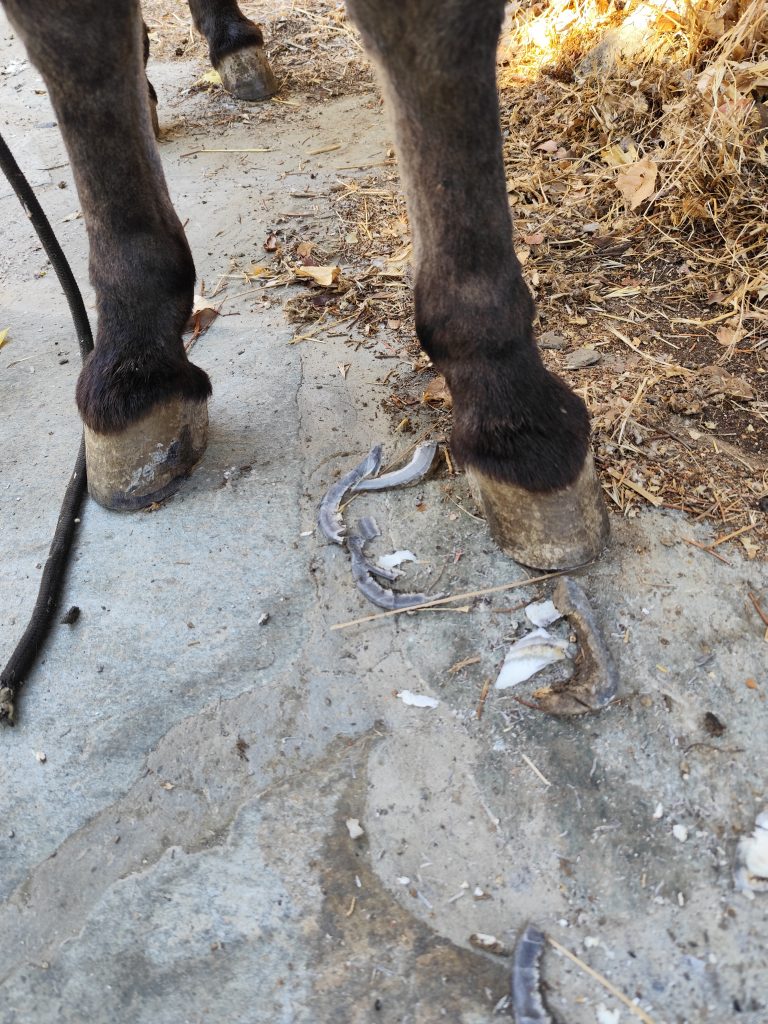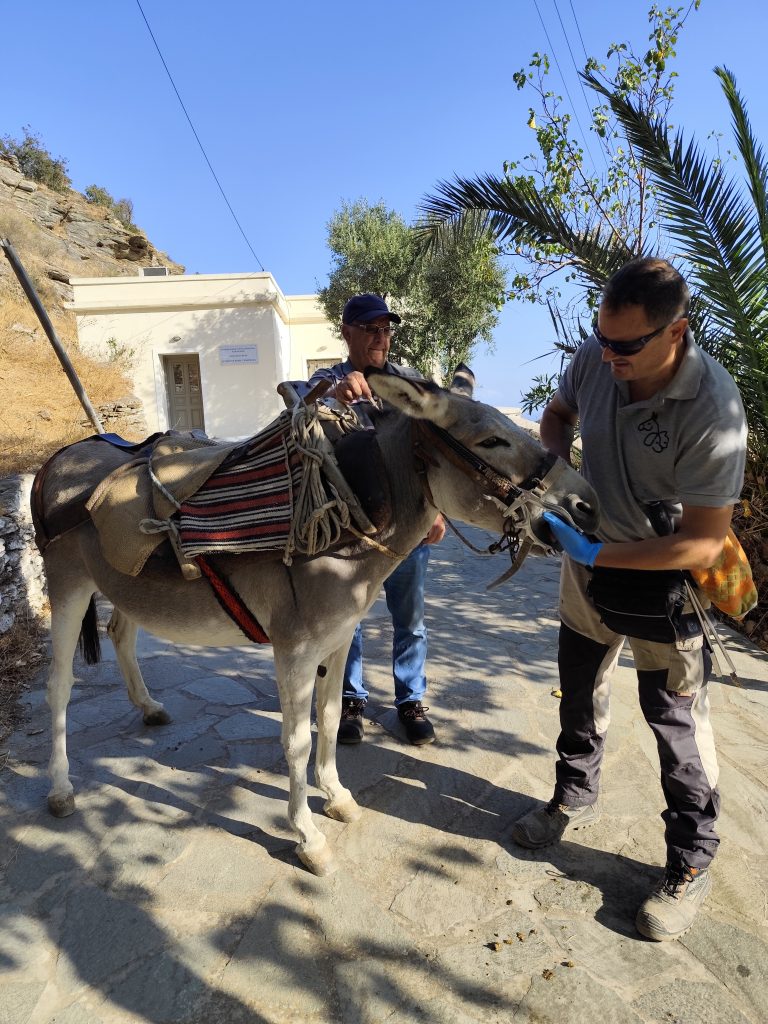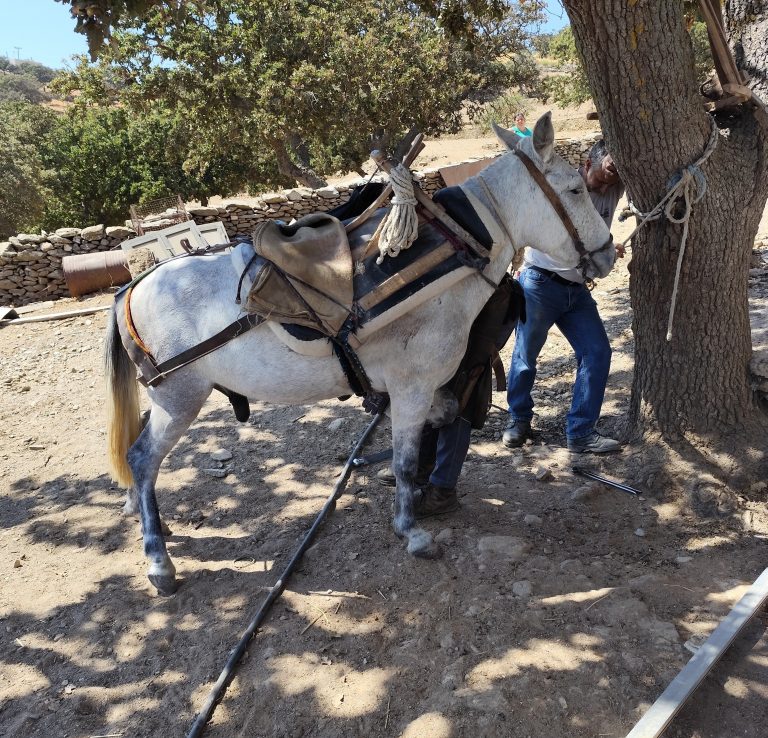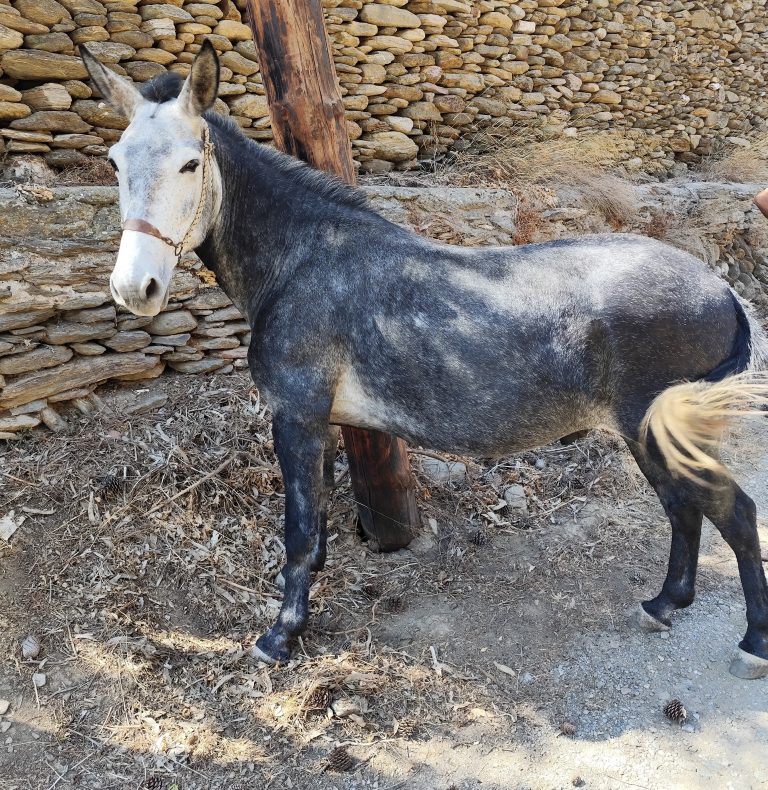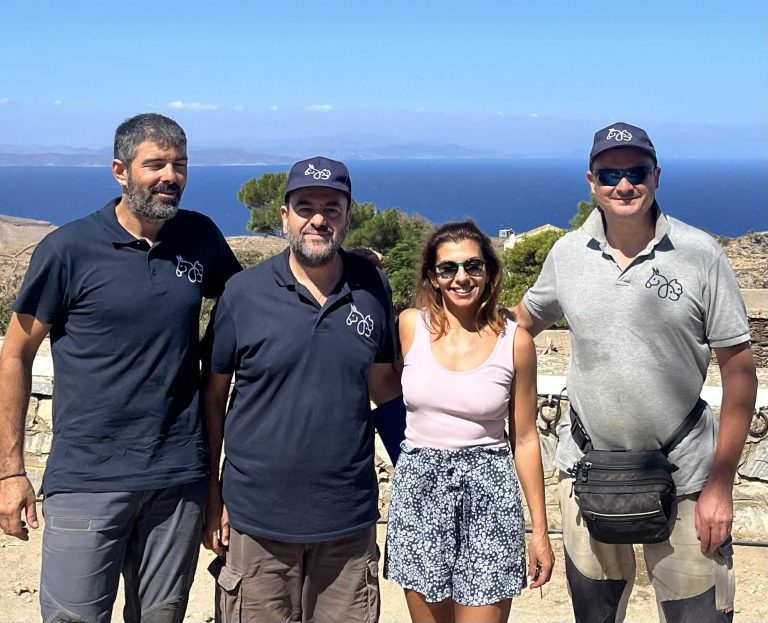In September 12-14, the Animal Action Greece team carried out a successful three-day outreach visit to the island of Kea, delivering essential veterinary, dental and farriery care to the island’s working equines.
Kea is a small island near Athens. Life there is relatively calm unlike that in the capital. There is still agriculture and livestock production with some extensive herding. Nevertheless, unfortunately, as everywhere in Greece, tourism industries recently have discovered it and proceed, as usual, in turning it into a busy resort.
In spite of all these, people from mountain and isolated lowland villages insist on living and working closer to nature enjoying the quality of the old ways. It’s no surprise that many of them still keep at least one equine, usually a donkey or a mule, to help them with their everyday needs.
The team, consisting of the veterinarian Kostas Okkas, the equine dental technician Alkis Gkeskos and the farrier Tasos Skyllas offered their services to 47 equines in total – 29 donkeys, 12 mules and 6 horses – across 16 villages.
The timing of this year’s mission, scheduled earlier in September, coincided with sunny and warm weather, which greatly facilitated the team’s work and travel across the island.
Use of equines
Most of the island’s equines treated by our team are used for agricultural work, including the transport of building materials, wood, water, and farm products, as well as for tourist riding. A small number are kept as pets or rescues.
Encouragingly, the majority of owners are young, and, while many have gaps in their knowledge of equine care—sometimes significant ones—they demonstrate a willingness to learn and are receptive to the guidance offered by our professionals; a positive sign for the future of equine welfare on the island.
Improvement in equine welfare
Our annual visits play a vital role in promoting equine welfare and supporting the long-term health of these animals. Each year, we observe notable improvements, not only in the body condition, skin, hooves, and behaviour of the animals but also in the responsiveness of the owners. Equines that last year presented serious issues were found in markedly better condition, thanks to the owners who applied the advice and practices shared during our visit. One horse with sweet itch had responded particularly well to treatment; after the owner consistently used insect repellents as advised, the condition was reported to be over 90% improved this summer. A donkey with a previous hoof injury and neck wounds from improper injections was found fully healed, while another donkey suffering from chronic laminitis and severely overgrown hooves had shown significant improvement. Additionally, a back injury observed last year in another working donkey had completely healed.
This year, our team encountered only one case of hobbling during the visit. However, this does not necessarily indicate that the practice has been eliminated on the island. Several police tourist reports related to hobbling were filed throughout the year, which likely contributed to an increased awareness among owners. Our team continues to inform and educate on the negative results of hobbling and the available alternatives.
Health and welfare assessment
Veterinary: The equines were generally found to be in good body condition, with the exception of only four equines being underweight and five overweight, which reflects a positive trend in the animals’ overall care. No serious health issues were encountered during the visit. Minor cases—including a hoof abscess, a swollen fetlock, lacrimation caused by fly irritation, and a small injury on the carpus—were all successfully treated on site. Horse flies were observed affecting many of the animals. Antiparasitic treatment was administered where needed, and owners were advised to use it routinely to help prevent further discomfort and related health problems.
Farriery: Regularly working equines required minimal hoof trimming, as regular movement on the terrain helps wear their hooves naturally. Trimming efforts focused primarily on corrective shaping to improve hoof balance and ensure comfort during work. However, due to the absence of a resident farrier on Kea, twelve animals not used regularly showed signs of overgrowth, highlighting the critical importance of even one annual visit in maintaining hoof health and preventing long-term issues.
Dental care: Routine floating was needed for most animals, primarily to address sharp edges and hooks. More complex issues, such as big ramps and accentuated transverse ridges (ATR), were less frequently observed, indicating a stable dental condition across the population. In relation to last year’s cases, Alkis our EDT was happy to see two ‘patients’ – a young horse and an old donkey – having obtained a satisfying body score and being in a good mood. Down almost to the last minute before departure, he had to take care of some difficult cases certain of which – such as dangerously overgrown and pointed cheek teeth – need more treatments within a year.
Microchipping: Finally, although our team placed only one microchip during this visit, we were informed that several equines had been microchipped over the past year, largely as a result of police interventions and need of the owners to comply with the legislation. Our team continues to educate owners on the importance of microchipping, emphasizing both its role in equine identification and welfare, as well as their legal obligation under the new regulations.
Noteworthy cases
One notable case involved an obese donkey suffering from chronic laminitis. While the owner lacks in-depth knowledge of equine care, he had been diligent in managing the donkey’s diet, following the advice provided during our previous visit; however, well-meaning neighbours continued to feed the animal inappropriately, unknowingly contributing to its condition. This case highlights the critical need for broader community education on equine nutrition and welfare and responsible behaviour towards animals.
One more case involves an elderly donkey adopted by a family last year and it was evident that they care for her deeply. However, during this year’s visit, the animal was found to be significantly underweight. Upon discussion with the owners, it became clear that the nutritional plan was insufficient, not due to negligence, but rather due to a lack of awareness regarding balanced nutrition and appropriate deworming practices. To address this, our team provided the owners with detailed, written guidance on the appropriate type and quantity of feed required to support the donkey’s health and well-being. Our Equine Care Programme Coordinator Elisa Geskou followed up the case and indeed the donkey has already taken on some weight.
Community engagement
The schedule was tight and last minute’s changes by some owners caused temporary disruptions; however, thanks to the cooperation and willingness of most owners, the team was able to successfully treat all the animals included in the programme.
This visit left the team with a strong sense of purpose and satisfaction, witnessing clear year-on-year improvement in equine health. The gratitude expressed by all owners, coupled with generous donations, reinforced the positive impact of the Programme and the strong bond between the team and the local community.
Thank you
Our sincere thanks to all the local sponsors of Kea for supporting this important work in equine welfare. This year Animal Action Greece collaborated for the first time with the local welfare group “Tetrapodis”, who seem to play an active role on the island’s animal life.
Many thanks to Eva Papadimitriou for covering part of the accommodation and one meal, to Simos Morfonios for providing accommodation and to “Tetrapodis” for covering the remaining of the meals.
Our thanks to everyone involved who made this mission possible, and to the residents of Kea for their collaboration in promoting equine welfare on the island.

